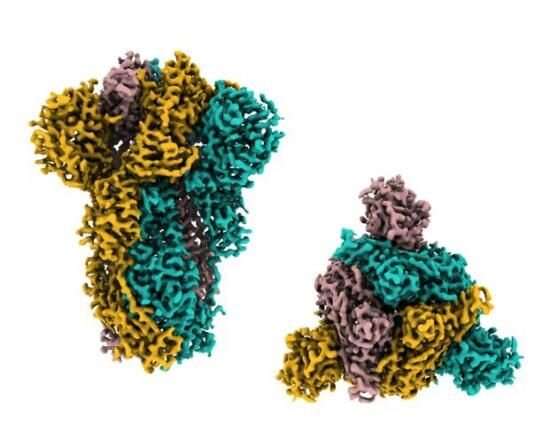
Scientists at the Francis Crick Institute have found important structural similarities between SARS-CoV-2 and a pangolin coronavirus, suggesting that a pangolin coronavirus could infect humans.
While SARS-CoV-2 is thought to have evolved from a bat coronavirus, its exact evolutionary path is still a mystery. Uncovering its history is challenging as there are likely many undiscovered bat coronaviruses and, due to differences between bat coronaviruses and SARS-CoV-2, it is thought that the virus may have passed to humans via at least one other species.
In their study, published in Nature Communications, the scientists compared the structures of the spike proteins found on SARS-CoV-2, the most similar currently identified bat coronavirus RaTG13, and a coronavirus isolated from Malayan pangolins which were seized by authorities after being smuggled to China. They found that the pangolin virus was able to bind to receptors from both pangolins and humans. This differs to the bat coronavirus, which could not effectively bind with human or pangolin receptors.
Antoni Wrobel, co-lead author and postdoctoral training fellow in the Structural Biology of Disease Processes Laboratory at the Crick, says: “By testing if the spike protein of a given virus can bind with cell receptors from different species, we’re able to see if, in theory, the virus could infect this species.”
“Importantly here, we’ve shown two key things. Firstly, that this bat virus would unlikely be able to infect pangolins. And secondly that a pangolin virus could potentially infect humans.”
The team used cryo-electron microscopy to uncover in minute detail the structure of the pangolin coronavirus’ spike protein, which is responsible for binding to and infecting cells. While some parts of the pangolin virus’ spike were found to be incredibly similar to SARS-CoV-2, other areas differed.
In terms of understanding the evolutionary path of SARS-CoV-2, this work does not confirm whether or not this pangolin virus is definitely part of the chain of evolution for SARS-CoV-2. But the findings do support various possible scenarios for how the coronavirus jumped from bats to humans. One potential route is that SARS-CoV-2 originated from a different, currently unknown bat coronavirus which could infect pangolins, and from this species it then moved to humans. Or alternatively, RaTG13 or a similar bat coronavirus might have merged with another coronavirus in a different intermediate species, other than a pangolin.
Donald Benton, co-lead author and postdoctoral training fellow in the Structural Biology of Disease Processes Laboratory at the Crick, says: “We still don’t have evidence to confirm the evolutionary path of SARS-CoV-2 or to prove definitively that this virus did pass through pangolins to humans.”
“However, we have shown that a pangolin virus could potentially jump to humans, so we urge caution in any contact with this species and the end of illegal smuggling and trade in pangolins to protect against this risk.”
Steve Gamblin, group leader of the Structural Biology of Disease Processes Laboratory at the Crick says: “A lot is still to be uncovered about the evolution of SARS-CoV-2, but the more we know about its history and which species it passed through, the more we understand about how it works, and how it may continue to evolve.”
This work builds upon previous studies from the Crick team, including research published in July 2020, which found that the bat coronavirus RaTG13 could not effectively bind to human receptors.
Source: Read Full Article



